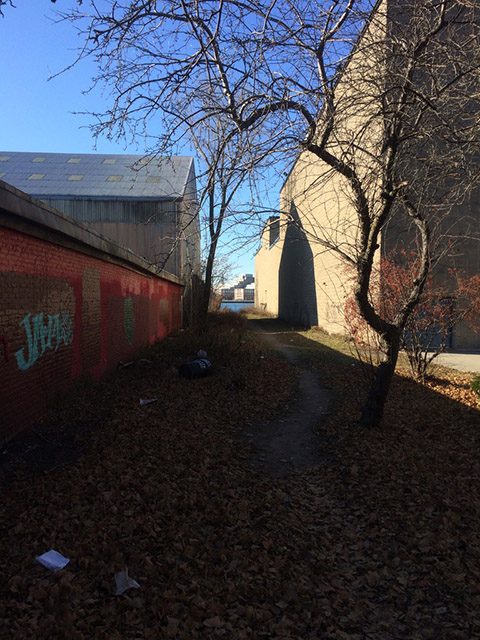
In December 2018, I made myself a self-guided driving and walking tour of East Boston.
The purpose was to orient myself to one of Metro Boston’s most unique and diverse neighborhoods while wrapping my head around their relationship to the waterfront and familiarizing myself with the sites of some recent projects related to the Climate Ready (East) Boston initiative.
Here are some observations.

Sliverviews
A simple test of a meaningful relationship to water might with begin:
- Can I see the water?
This question becomes modified by issues largely related to equity:
- Why can’t I see the water? What prevents me from seeing it?
- Do I have to pay to see it?
- Do I have to be in a special place – such as high ground – to see it?
In many, many waterfronts in America (and many other places), answering these questions isn’t as straightforward as one might hope.

A ‘sliverview’ is a term I use for exactly that: a forced view down a perspective which affords only a small view of something, be it sky or grass or – in East Boston’s case – the water. It’s a proxy for access: the less you can see of it, the likelier it is that it’s hard to access.
In a previous piece on neighboring Chelsea, Massachusetts, I quoted City Councillor Leo Robinson who articulated well the relationship between equity and access:
“I grew up in a waterfront community, but I didn’t know so.
I didn’t know so because of the heavy industrial and bulk storage of goods dominating Chelsea’s waterfront. The irony is that the very waterfront that was stolen from me during my youth could be become totally engulfed in water should the sea level rise as some of the models indicate.
Chelsea’s vitality – in fact, its very existence – was based upon a connection to the water.”
East Boston is similar.
Further questions such as ‘Can I touch the water? Can I get in it?’ are even more critical to be able to answer. But, the fact that they’re being asked in many waterfront communities is a sign of progress.
Driving and walking in East Boston, there are accessible waterfronts and some wonderful public spaces such as LoPresti and Piers Parks, but there are also plenty of barriers – visual and physical – to equitable access to the waterfront. Some of the Climate Ready Boston work is designed to address this.
More soon…